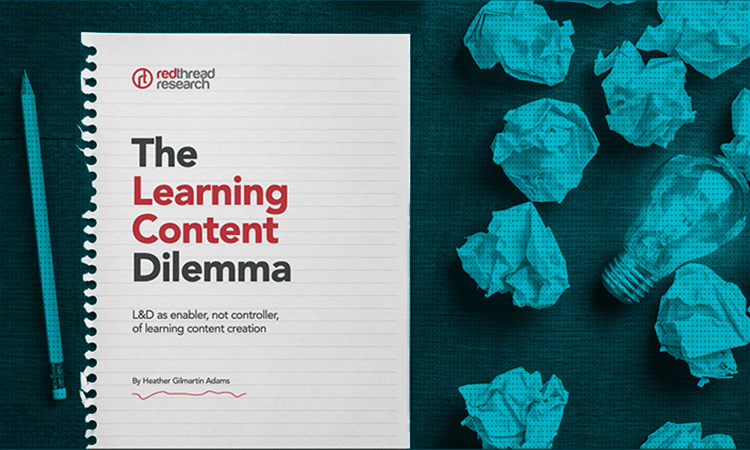5 ways to put key corporate elearning trends into action this year
5 minute read
Learning and Development (L&D) is emerging from a period of exploration. New tech has been tested, innovative techniques trialed, and some crucial lessons have been learned along the way. Now it’s time to turn those lessons into action. The good news? Some digital learning trends have emerged that can make a real difference. We’ve tapped into the minds of top L&D experts to show you how to turn these trends into practical actions that deliver tangible impact.

Emerging digital learning trends
L&D continue to grapple with a digital learning landscape in a state of flux. From new technologies to shifting skills requirements, they’re being asked to tackle new and complex challenges. With budgets and resources staying the same, L&D need to look for new approaches to deliver impact.
We wanted to discover how teams are planning to respond to this new digital learning landscape, so we surveyed 300+ professionals in over 130 different enterprise organizations.
Three key trends emerged from the insights they provided:
- Using AI meaningfully – Leverage new technology to deliver learning impact securely, ethically, and efficiently rather than just producing content.
- Empowering SMEs to generate learning content – Recognize that these internal experts are more crucial than ever for accurate, up-to-date, and impactful learning.
- Refocusing on skills – Support the business in the shift from role-based structures to being a truly skills-based organization.
But how do you turn these trends into impactful action?
5 ways to embrace digital learning trends
Here are 5 ways L&D leaders are planning to put digital learning trends into practice.
1. Augment roles with AI
From content overload to ineffective learning, the challenges of new tech are coming into focus. But that isn’t a reason to take a step back. Instead, you need to use technology with intention.
“Rather than replacing human roles, AI will augment them, enabling deeper needs analysis, enhancing content recommendations, checking for accessibility concerns, and supporting real-time learning insights. Ultimately, improving efficiency without undermining the human touch that’s crucial for effective learning.”
Heidi Kirby, Learning and Development Consultant and Coach, Useful Stuff
Want to get ahead with this trend?
- Identify tasks that can be automated – think administrative work, scheduling, and content management.
- Keep a close eye on where the human touch is irreplaceable – leave those areas for your team to shine.
- Use AI to spot areas prone to human error – a second pair of eyes never hurts!
2. Take personalization to the next level
When we ask employees what they want from their digital learning, relevance always comes high on their list of must haves. Advances in AI mean the tailor-made learning experiences everyone wants are now within reach.
“AI definitely plays a part in enabling more personalized experiences, and identifying opportunities for growth and progression that we may not otherwise spot.”
Anonymous expert
Want to get ahead with this trend?
- Identify all the ways that learning could be personalized in your organization – e.g. by role, department or location.
- Dig into your organization’s available data to spot any new ways to make your learning experiences more targeted?
- Explore the ways that AI could help you provide personalized learning at scale – e.g. smarter content search and chatbot coaches.
3. Upskill in L&D
L&D can’t just talk the talk – it’s vital to walk the walk. If you’re going to lead your organization in upskilling and reskilling, you need to upskill your team first.
“It’s crucial that we not only upskill on the use of AI but also on soft skills, such as analytical thinking and problem-solving, to get the most out of AI. In the end, we want to aim for a human-machine partnership.”
Bianca Baumann, VP, Learning Solutions & Innovation, Ardent
Want to get ahead with this trend?
- Audit your team’s current knowledge and skills – what are the current and potential future skill gaps?
- Identify how you can use AI to pinpoint areas for improvement and training opportunities.
- Explore how you can adapt your foundational L&D skills to fit the new digital landscape.
4. Use data to move to a skills-based approach
The skills landscape is constantly shifting, and L&D is uniquely positioned to support that evolution. But jumping headfirst into a skills-based approach isn’t the right move. Instead, use data to find the gaps and work with other departments to deliver impact.
“Start building a skills-based organization using data in meaningful ways to identify skills gaps and to help individuals advance their careers. Prove the value of your L&D function in the face of so much change.”
Cammy Bean, Senior Solutions Consultant, Kineo
Want to get ahead with this trend?
- Be part of your organization’s strategic conversation about skills – set by leadership and flowing through every department.
- Take the pulse of external skill trends through government reports and industry publications.
- Start skill-mapping to make sure your digital learning aligns with changing skill requirements.
5. Maximize efficiency and minimize disruptions for SMEs
Experiments with AI have highlighted one key thing: human expertise is more important than ever. Make sure your SMEs are supported. Provide guidance and scaffolding to maximize their impact.
“As technology advances and turnaround requests become quicker, SMEs will be essential for validating the accuracy of content, especially when it is generated by AI. L&D organizations should leverage technology that maximizes the efficiency of SMEs while minimizing disruptions to the SMEs regular responsibilities.”
David Barone, Head of Global Digital Learning, Takeda
Want to get ahead with this trend?
- Define processes for how SMEs, AI, and L&D teams can collaborate seamlessly.
- Create templates to keep everyone on track and maintain content quality and consistency.
- Encourage SMEs to share their experiences and insights – peer-to-peer support goes a long way.
Putting digital learning trends into practice in summary
As we move from experimentation to real-world use, new trends in technology and processes need to combine to deliver business impact. You can turn these trends into practical actions by:
- Augmenting roles with AI.
- Taking personalization to the next level.
- Upskilling L&D.
- Using data to move to a skills-based approach.
- Maximizing efficiency and minimizing disruptions for SMEs.
If you want to find out more about the latest trends, read our full State of Digital Learning Report 2025.




